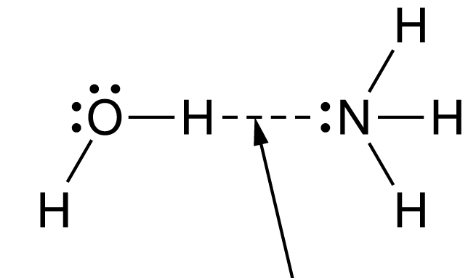
What is hydrogen bonding?
A fertilizer contains a lot of nitrogen and phosphorous. The nitrogen and phosphorous will be incorporated into this macromolecule.
What are nucleic acids?
Which of the following metabolic processes have been conserved and serve as evidence for evolution?
a.Oxidative phosphorylation
b.Calvin cycle
c.Glycolysis
d.Light independent reaction
what is glycolysis
This second messenger links cell surface reception with signal transduction
This property of water is responsible for making water less dense in its frozen state.
What is H bonding?
This is the end where nucleotides are added onto a nucleic acid.
What is 3' end?
This cell structure is directly involved in apoptosis since it has digestive enzymes.
What is a lysosome?
Adding acid to an enzyme messes with this protein structure since it can interrupt H-bonding, ionic bonding, and hydrophobic interactions
What is tertiary structure?
This enzyme is responsible for adding phosphate groups to other enzymes.
What is a kinase?
Which of the following best describes how the reaction rate of an enzyme will be affected?
a. Freezing an enzyme will denature the tertiary structure of the enzyme, slowing down the reaction rate.
b. Increasing the temperature to boiling will increase the reaction rate of an enzyme because it increases the speed of the molecules.
c. Adding acid to an enzyme will decrease the reaction rate because the tertiary structure of the enzyme will be altered.
d. Decreasing competitive inhibitors will decrease the reaction rate of an enzyme because there are less molecules colliding with each other.
c
This many waters is required to hydrolyze this amino acid.

What is 2?
This is an example of which kind of movement across a cell membrane.
What is active transport?
During respiration, most ATP is formed as a direct result of the net movement of
a. potassium (K+) against a concentration gradient
b. protons (H+) down a concentration gradient
c. electrons (e-) against a concentration gradient
d. electrons (e-) through a channel
b
Adjacent plant cells have narrow channels called plasmodesmata that pass through the cell walls of the connected cells and allow a cytoplasmic connection between the cells. Which of the following statements best explains a primary function of plasmodesmata?
a.They allow the movement of molecules from one cell to another, enabling communication between cells.
b. They prevent the cell membrane from pulling away from the cell wall during periods of drought.
c. They eliminate the need to produce signaling molecules and eliminate the need for cells to have receptors for signaling molecules.
d. They increase the surface area available for attachment of ribosomes and thus increase protein synthesis.
A
This cell structure is where a protein would go after being made at the endoplasmic reticulum.
What is the golgi body / golgi apparatus?
Which of the following characteristics would indicate that a fragment is RNA and not DNA ?
a.The presence of an additional hydroxyl group (OH)
b.The 5′ to 3′ orientation of the nucleotide chain.
c. the charges on the phosphate groups.
d. The type of bond linking the nucleotides together.
A. The presence of an additional hydroxyl group
Aldosterone (a steroid hormone) is a small, nonpolar, hydrophobic molecule that enters a target cell by moving across the plasma membrane, down a concentration gradient. Based on the information presented, how does aldosterone most likely enter target cells?
What is passive transport/ diffusion?
This is an intermediary electron acceptor in the krebs cycle and glycolysis
What is NAD+?
This part of cell communication is why different cells can respond to the same ligand differently.
What is signal transduction?
This property of mitochondria and chloroplasts are necessary to making them efficient in producing and capturing energy.
What is surface area?
What chemical reaction is this? Name the monomer and polymer.
Dehydration synthesis
amino acid --> polypeptide
In an experiment, the efficiency of oxygen exchange across the plasma membrane is being assessed in four artificial red blood cells. The table above lists some properties of those artificial cells. Other conditions being equal, which artificial cell is predicted to be the most efficient in exchanging oxygen with the environment by diffusion?
what is a cube?
According to the chemiosmotic theory (chemiosmotic coupling), the energy required to move protons from the mitochondrial matrix to the intermembrane space against a concentration gradient comes most directly from
a. photons of red or blue light
b. the hydrolysis of ATP
c. the breakdown of high-energy fatty acids in the mitochondrial matrix
d. electrons flowing along the electron transport chain
e. substrate-level phosphorylation
d. electrons flowing along the electron transport chain
A newly developed medication for pulmonary hypertension targets blood vessels in the lungs, but does not affect blood vessels in the liver because the ligand is not able to bind to this.
What is a receptor?
This is two are evidence for endosymbiotic theory (name 2).
What are ribosomes?
What is a double membrane?
What is circular DNA?
What is reproduction? (They reproduce the same as bacteria.)